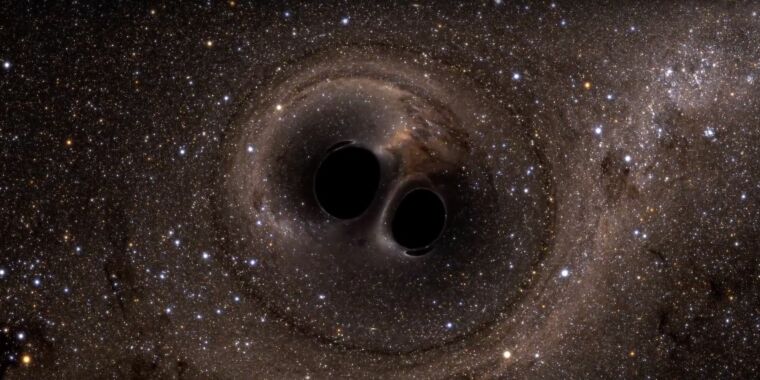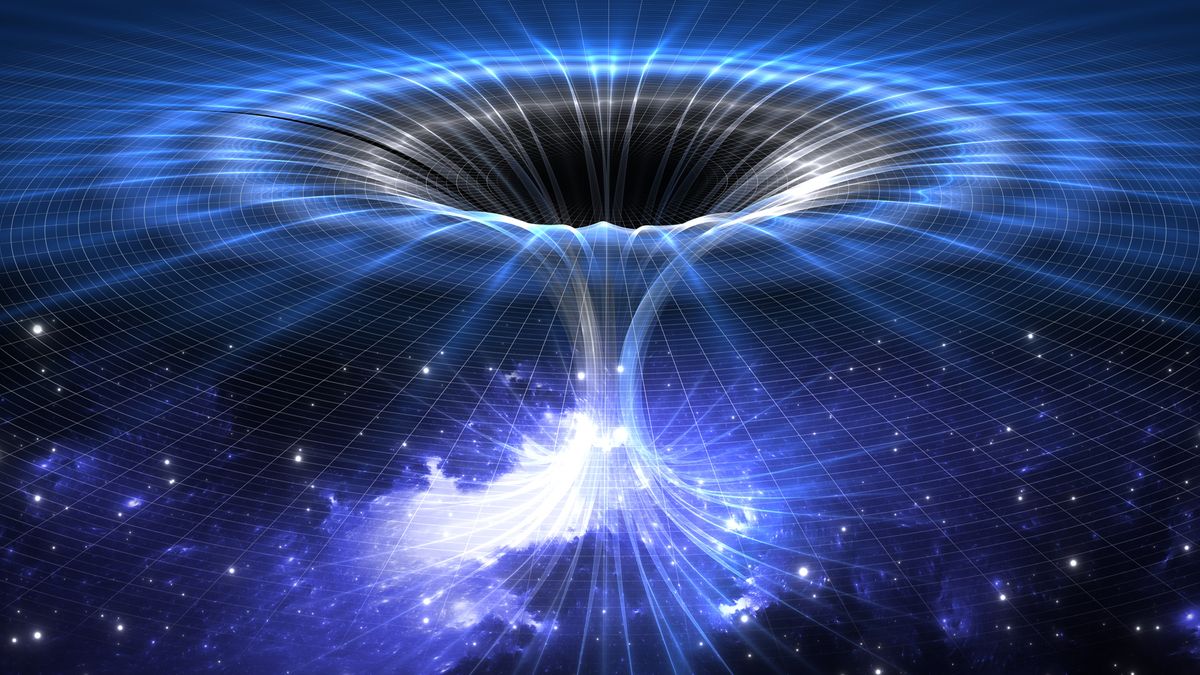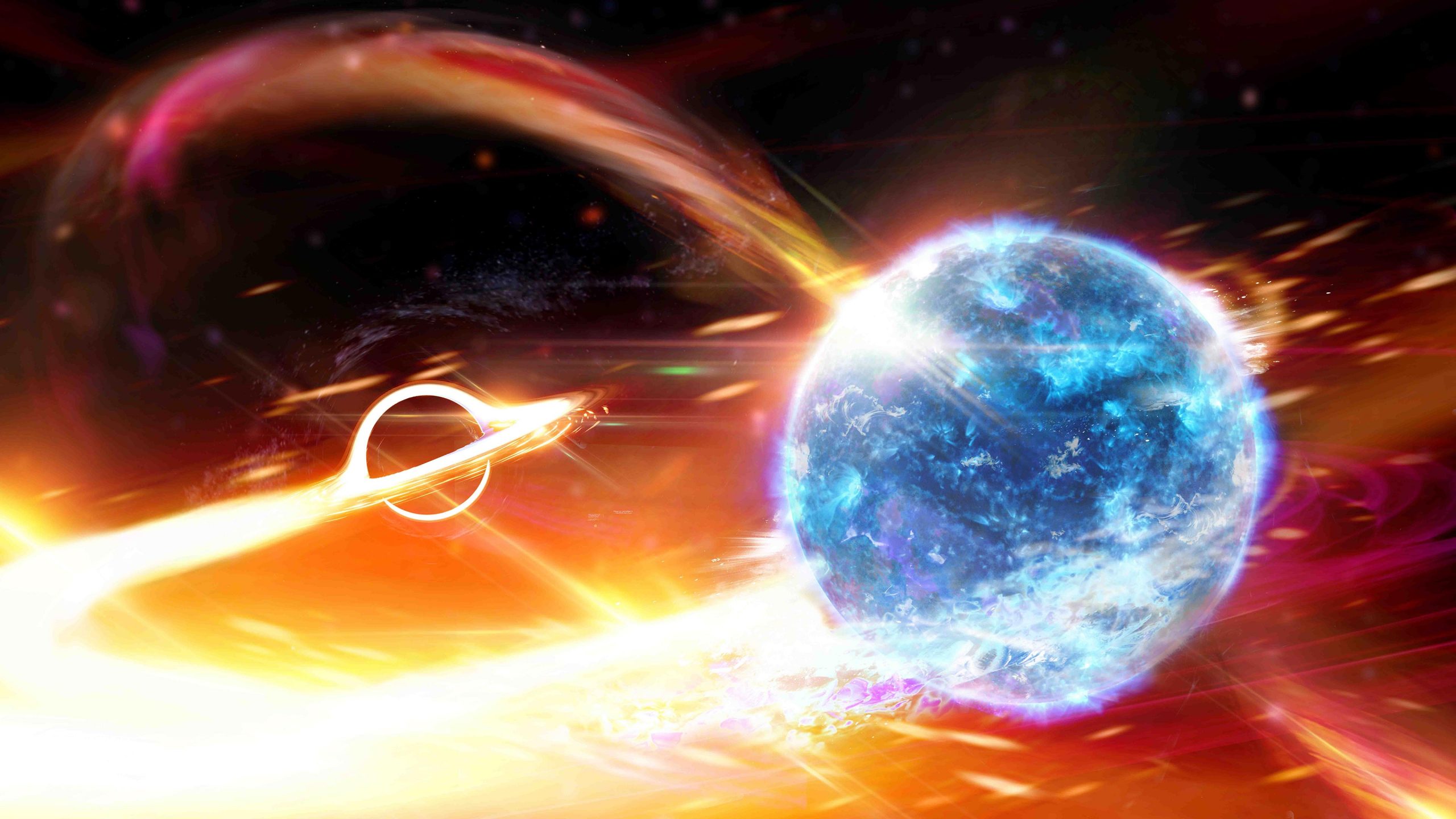
Planet X has a long and storied history of non-existence. For about 130 years, astronomers have debated the existence of an additional planet or planets to explain discrepancies in the orbits of the known planets (mainly Neptune and Uranus). Later, the list of discrepancies was expanded to cover trans-Neptunian objects. But none of the Planet X candidates discovered, including Pluto, have the mass or location to explain observations.
Primordial black holes have now been proposed as the latest planet X (or planet 9, since Pluto was demoted).
Were you following this:
What happens if black holes fall into wormholes? A new way to find out. | Space

Astronomers think they might be able to detect black holes falling into wormholes using ripples in spacetime known as gravitational waves, but only if wormholes actually exist and such a scenario ever happened, a new study finds.
According to Einstein, who first predicted the existence of gravitational waves in 1916, gravity results from the way in which mass warps space and time. When two or more objects move within a gravitational field, they produce gravitational waves that travel at the speed of light , stretching and squeezing space-time along the way.
Investigating Black Hole Formation | astrobites

Dwarf galaxies are believed by some to be time capsules, but instead of old records, they are thought to preserve the seeds of black holes formed in the early Universe. This is because most dwarf galaxies detected in the nearby Universe don’t show signs of interacting with their galactic neighbours, leaving these relatively low mass collections of gas, dust and stars to evolve in isolation.
Two formation mechanisms dominate discussion: either black holes formed from the collapse of early generations of stars, known as Pop III 's, or they formed from the direct collapse of gas and dust. If the former mechanism dominates then we would expect to find large numbers of low mass black holes, while the latter mechanism is predicted to produce a much smaller number of higher mass seeds.
Neutron Star Extreme Matter Observatory (NEMO) – Building a $100M Black Hole Detector

Artist’s depiction of a black hole about to swallow a neutron star. Credit: Carl Knox, OzGrav ARC Centre of Excellence
A new study makes a compelling case for the development of “NEMO”—a new observatory in Australia that could deliver on some of the most exciting gravitational-wave science next-generation detectors have to offer, but at a fraction of the cost.
The study, co-authored by the ARC Center of Excellence for Gravitational Wave Discovery (OzGrav), coincides with an Astronomy Decadal Plan mid-term review by Australian Academy of Sciences where “NEMO” is identified as a priority goal.
Quite a lot has been going on:
Here's What Happens When a Supermassive Black Hole Fails to Do Its Job [Video]

Galaxy Cluster SpARCS104922.6+564032.5. Credit: X-ray: NASA/CXO/Univ. of Montreal/J. Hlavacek-Larrondo et al; Optical: NASA/STScI
Astronomers have seen many examples where a supermassive black hole in a cluster’s central galaxy prevents this hot gas from cooling to form vast numbers of stars. This heating allows supermassive black holes to influence or control the activity and evolution of their host cluster.
However, the would-be domineering black hole in SpARCS1049 is behaving differently and is almost completely dormant. This appears to be allowing star formation to run rampant. According to observations from Hubble and NASA’s Spitzer Space Telescope, SpARCS1049 is forming stars at a rate over 300 times our Milky Way galaxy.
Beyond black hole's horizon, artists find maelstrom of meaning
In April last year, an image captured the eye — and imagination — of Dr Edward Colless, editor of venerable art publication Art + Australia.
It was all over the news. On a dark background, a lopsided halo of fire surrounded a blurry black centre.
It was the first ever "photo" of a black hole: an astronomical monster in a distant galaxy, 40 billion kilometres across, 500 million trillion kilometres away, 6.5 billion times heavier than the Sun, captured by the Event Horizon Telescope, a network of eight individual telescopes across the world.
What would happen if a black hole traveled through a wormhole?

Black holes are already bizarre enough. In the dark vacuum of space that is anything but boring, they pull stunts like colliding into one another or ripping apart entire stars in a feeding frenzy, but what if things suddenly got a whole lot stranger and a wormhole swallowed a black hole?
"For binary systems of black holes (or neutron stars), the gravitational waves take away energy, so the system falls together," William Gabella, who co-authored a study soon to be published in General Relativity and Quantum Cosmology , told SYFY WIRE. "As they fall together, they orbit around each other faster, and faster, giving the chirp to the gravitational wave signal.
Black Hole: Insider Information from Raiders Training Camp

Wow Hondo! What a great article. Us Raider fans love well written thought out pieces, and you gave us a great one. We're starving for this kind of info, you are like manna from heaven. Looking forward to your articles from here on out. been a Raiders fan since Red Hickey broke up the Million Dollar Backfield of the 49rs, and it's been Silver and Black ever since.
What an article, you are the boss, sir, there is no way I would miss any of your stories, I have this to remind me to look for them, I am a CARPENTER and company that I work for is HONDO FRAMING, in so Cali, Crazy

No comments:
Post a Comment